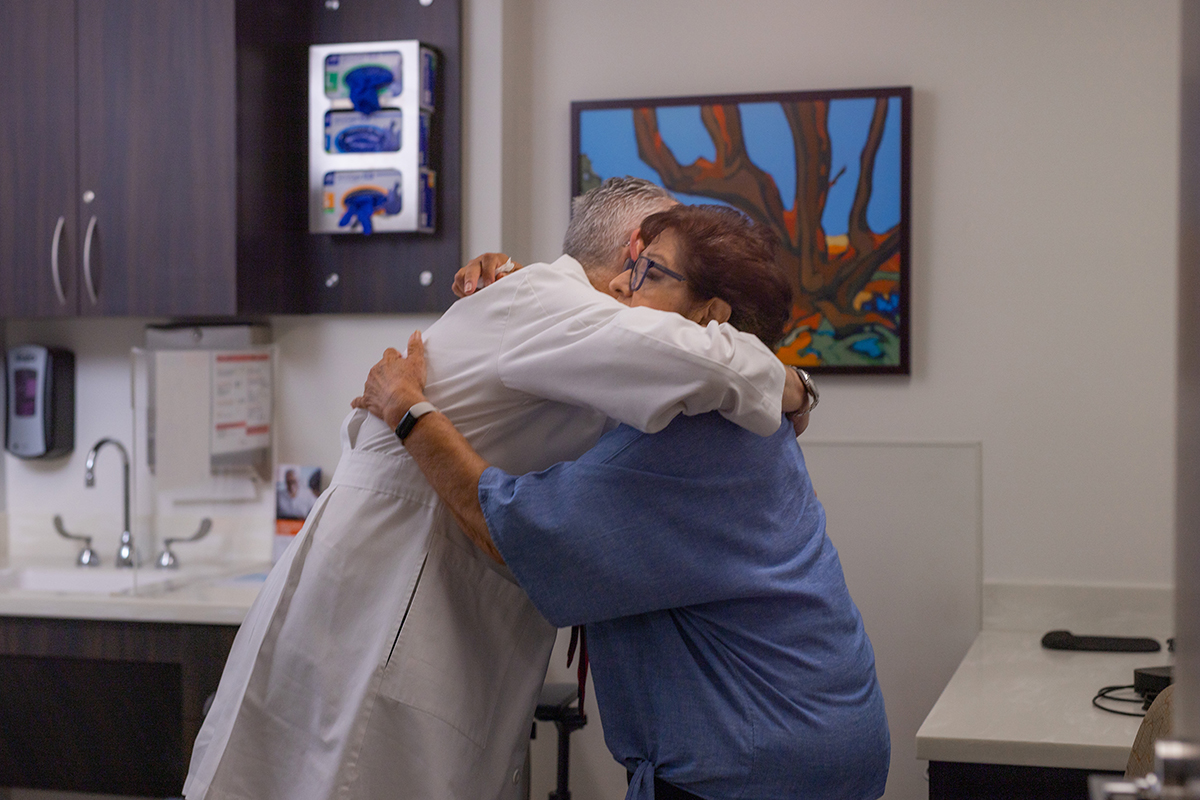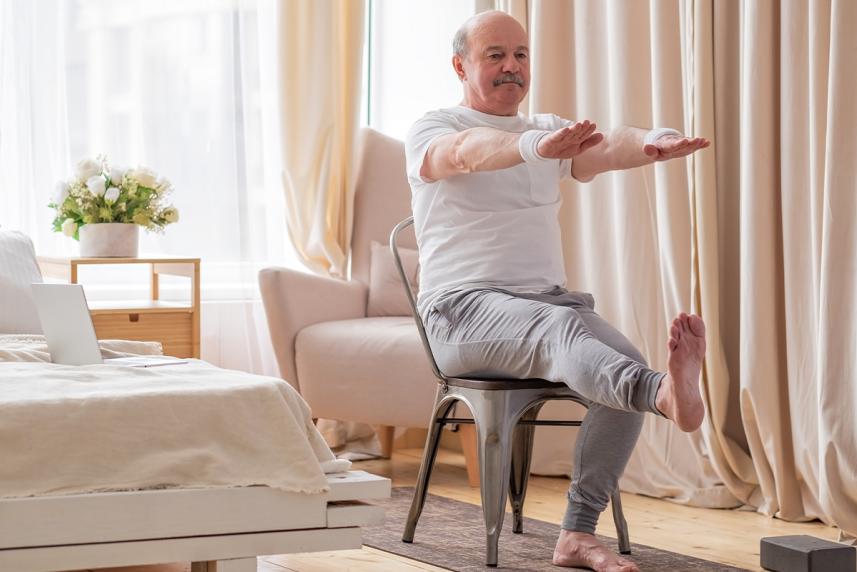
At Optum, you get personalized care to help you meet your health goals. That's why more than 4 million people trust our doctors and Medicare Advantage.

Working on your balance and making some simple changes in your home can keep you from getting injured. Here’s what you need to know.
Tripping on a curb. Stumbling over a pile of laundry on the floor. Anyone can trip and take a minor tumble. But for adults ages 65 and over, falls are a particularly serious health risk. Each year, about 3 million older adults go to the emergency room after a fall. And one in five falls cause injury, such as broken bones or a head injury.1
But there’s good news: You can lower your risk of falling as you age. Exercises to boost your leg strength and your balance can help you stay steady on your feet.1 And simple fall-proofing steps can make your home safer.
Balance exercises can give you flexibility in your joints, says Nancy Swayze, MD. She is the chief of skilled nursing facilities in geriatrics for the Reliant Medical Group in Worcester, Massachusetts. That can help you get your balance back before you fall down.
Here are Dr. Swayze’s top tips for improving your balance and making your home as safe from falls as possible.

At Optum, you get personalized care to help you meet your health goals. That's why more than 4 million people trust our doctors and Medicare Advantage.
Maybe you are on the move all the time. Or maybe you’re just getting started with moving more. Either way, these exercises from Dr. Swayze can help keep you steady on your feet. And you might need them when you least expect it.
Move #1: Toe stand
Building up your calf muscles will help you keep your balance when you’re standing up. Follow these steps:
Move #2: Ankle pump
This move is simple but helpful. “An ankle pump is a point and flex,” says Dr. Swayze. It strengthens your ankles and shins, which can help you keep your balance. Follow these steps:
Move #3: Standing on one foot
Get comfortable standing on one foot to help prevent a fall. “It gives your body the flexibility to be reactive,” says Dr. Swayze. Try this exercise:
Marching in place is another good way to get comfortable on one leg.
Move #4: Belly breathing
Deep breathing can boost your balance. It helps you stay centered, says Dr. Swayze. Here’s what to do:
Dr. Swayze says belly breathing is especially helpful if you have back trouble.
Get our best tips for living your healthiest life delivered straight to your inbox. Sign up for our newsletter today.
You can use these tips to make your home a safe, fall-proof space.3
Clean up clutter on the floor: Do you have to walk around furniture as you move from room to room? Are there piles of books or magazines on the floor? Or clothes stacked on your staircase? It’s a good idea to clear away anything you can trip over.3
Remove throw rugs: Small rugs are big tripping hazards. You can catch your toe on the edge of an area rug and lose your balance. Or a small rug in the kitchen or bathroom can slip when you step on it, causing you to fall. “Those tend to move on people, despite the grips on the bottom,” says Dr. Swayze.
Tame your wires: Make your floor safer by getting your devices’ wires and extension cords out of the way. This way you won’t trip on them.4
Make sure your home is well lit: You need a clear, well-lit path to get from room to room.4 Replace burned-out light bulbs. If stairwells are not well lit, hire an electrician to install overhead lighting. Do you get out of bed to use the bathroom at night? Be sure you’ve got nightlights so you can see the path easily.
Install grab bars: These are important in your shower and near the toilet. Use a nonslip mat inside your shower too.3
Check handrails on staircases: Make sure they are secure. If an indoor or outdoor stair doesn’t have a railing, have one installed.3
Wear sturdy shoes: That goes for slippers, too, says Dr. Swayze. “If they aren’t secure on the heel, the slipper slips and you can lose your footing.”
Finally, it’s a good idea to get your eyes and ears checked on a regular basis.5 “Good vision and hearing are important for balance,” says Dr. Swayze. Talk to your doctor about other steps you can take to cut the risk of falling.
Stock up on all your health essentials. The Optum Store has the products you love at everyday low prices. Use your HSA/FSA dollars to save even more. Shop now.
Sources
© 2024 Optum, Inc. All rights reserved. Do not reproduce, transmit or modify any information or content on this website in any form or by any means without the express written permission of Optum.
The information featured in this site is general in nature. The site provides health information designed to complement your personal health management. It does not provide medical advice or health services and is not meant to replace professional advice or imply coverage of specific clinical services or products. The inclusion of links to other web sites does not imply any endorsement of the material on such websites.
Consult your doctor prior to beginning an exercise program or making changes to your lifestyle or health care routine.
Stock photo. Posed by model.